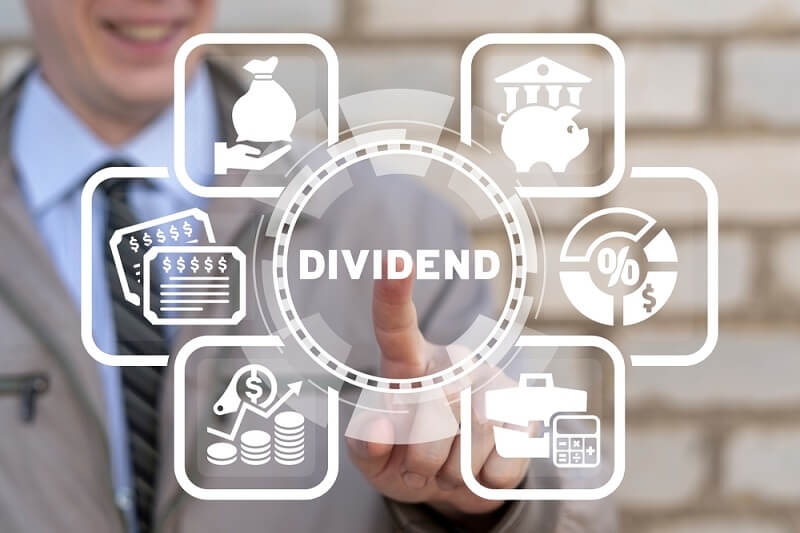
If you want a solid means of amassing wealth and receiving regular income, investing in dividend stocks is a great place to start. Unlike other investments, which depend entirely on price increases, dividend stocks reward you with money on a predictable schedule, typically every three months. Adding this income to long-term appreciation makes them the perfect investment for novice investors who like to let money grow at a slow, consistent rate.
This blog will consider beginning dividend stock investing, understanding key concepts like dividend yield vs growth, and even the use of tools like the DRIP dividend reinvestment plan in order to optimize your results. Let's take it step by step.
Dividend stocks are shares in companies that issue a share of their profits to shareholders periodically. They are referred to as dividends. Certain companies, particularly those that have stable businesses like utilities, consumer products, and drugs, have a dividend-paying history.
For instance, such companies as Coca-Cola, Johnson & Johnson, and Procter & Gamble have had a dividend-paying history even in times of recession.
These are some of the reasons why the majority of investors, particularly new investors, are interested in dividend stocks:
This is the reason why a dividend income strategy has become highly acceptable among retirees and even young investors who would like to accumulate their wealth passively.
Before you start, here are some basic terms you can learn:
Knowing these basics shows you how to select the right stocks and avoid risky decisions.

New investors usually have this question in mind: Do I invest in a stock with a high dividend yield, or one with high growth?
Here's a straightforward comparison of dividend yield vs growth:
The best strategy is often in the middle—choose companies with stable dividends and steady growth. Avoid extremely high yields, as these can be warning signs.
Keep it simple. Choose companies that:
Some of the top dividend stocks for new investors are:
They are often members of what is referred to as the "Dividend Aristocrats"—those firms that have a history of raising their dividends annually for at least 25 years.
Alternatively, if you don't feel like choosing individual stocks, you can still gain the benefits of dividend investing by leveraging ETFs (exchange-traded funds). These are collections of dividend-paying stocks professionally managed.
Some high dividend ETF picks are:
These funds provide immediate diversification, reduced risk, and regular income. ETFs provide a convenient method for new investors to enter dividend stock investing without needing to know every corporation.
Reinvesting your dividends is one of the soundest methods of saving your earnings in the long term. Rather than getting cash, you purchase additional shares in the same security or ETF. This is referred to as a DRIP (Dividend Reinvestment Plan).
Most large brokerages, such as Fidelity, Vanguard, and Charles Schwab, have DRIP facilities available free of charge. It's a great way to keep yourself invested and build riches automatically.
Having a plan is important. Your dividend income plan should contain:
This thrifty strategy accumulates long-term wealth with less worry.
You'll need a brokerage account to invest in dividend stocks. Select one that:
Some of the most popular starting brokers are:
After you have an account, you can purchase your first dividend stock or ETF and begin building your portfolio.
After you start investing, monitor your results. Look at your dividend income every few months. Ask yourself:
Don't overreact to short-term market movements. Dividend investing is a long-term proposition. If your stocks keep on paying and raising dividends, don't blink.
These are some blunders to steer clear of that can ruin your returns:
Ignoring fees and taxes: Understand how dividend taxes affect your returns, especially if you’re investing in a taxable account.
Assume you invest $300 a month in dividend stocks that pay an average yield of 4% and pay out dividends. In 10 years, your portfolio could be worth more than $45,000, and making more than $1,800 a year in dividends. If you stick to it, at the age of 20, it would be over $120,000 with a $4,800 yearly income.
This shows the strength of constant investing, smart choices, and compounding.
Early investment in dividend stock is literally the simplest and safest way to get wealthy and earn passive income. New investors also receive payments periodically and can be larger long-term with the right mindset and strategy. Own solid companies or superior dividend ETF substitutes, employ a DRIP dividend reinvestment plan, and have trade-offs in dividend yield and growth.
Whether you want to create a plan to retire on dividend yields or just want to supplement your income each year, the time is opportune to start. Do it step by step, be persistent, and time will take care of the rest.
This content was created by AI